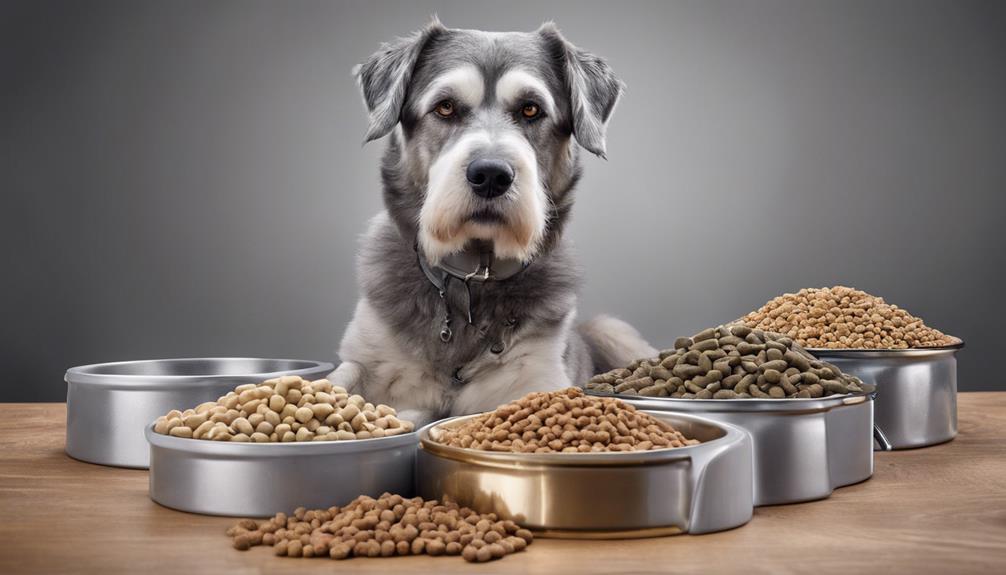Selecting the right food for your dog can be overwhelming with so many options available. However, feeding your pet the right food is crucial for their health, energy, and overall well-being. To make the best choice, it’s important to consider your dog’s age, size, breed, and any specific health needs they may have. Here’s a guide on how to choose the best dog food for your pet’s age and size.
1. Consider Your Dog’s Age
Just like people, dogs have different nutritional needs at various stages of their lives. Their energy levels, metabolism, and activity levels change as they grow older. Selecting the right food based on age will ensure they receive the proper nutrients for their life stage.
Puppy Food
Puppies need food that supports growth and development. Look for a formula that contains higher levels of protein and fat, which help in building muscles, tissues, and energy stores. Puppy food is specifically designed to support their rapid growth and to help them develop strong bones and teeth.
-
What to look for: High-quality protein, DHA (for brain development), and appropriate calcium levels for strong bones.
-
Best for: Dogs under 12 months of age.
Adult Dog Food
Adult dogs require balanced nutrition to maintain their weight, energy, and health. They don’t need the extra calories or nutrients that puppies do, but they still need adequate amounts of protein and fat. Look for a formula that supports muscle maintenance, joint health, and a shiny coat.
-
What to look for: Balanced protein, fat, vitamins, and minerals.
-
Best for: Dogs aged 1 to 7 years.
Senior Dog Food
As dogs age, they become less active and their metabolism slows down. Senior dog food is typically lower in calories to prevent obesity and contains nutrients to support joint health and digestion. It also includes antioxidants to help maintain a strong immune system.
-
What to look for: Lower fat content, added fiber for digestion, and joint-supporting ingredients like glucosamine and chondroitin.
-
Best for: Dogs aged 7+ years.
2. Consider Your Dog’s Size
The size of your dog plays a key role in choosing the right food. Small, medium, and large dogs have different nutritional needs, and selecting a food tailored to their size will help them thrive.
Small Breed Dogs
Small dogs have faster metabolisms, so they need a food that is high in protein and fat to support their energetic lifestyle. They also have smaller stomachs, so food designed for small breeds often comes in smaller kibble sizes for easier chewing.
-
What to look for: High protein, high fat, smaller kibble size.
-
Best for: Dogs under 20 pounds.
Medium-Breed Dogs
Medium-sized dogs have a more moderate metabolism compared to small breeds, but they still need a balanced diet that supports their energy needs. Look for a formula that provides sufficient protein and fat for muscle maintenance and energy.
-
What to look for: Balanced protein and fat content.
-
Best for: Dogs weighing between 20 to 50 pounds.
Large Breed Dogs
Large breed dogs have slower metabolisms and can be more prone to joint issues, so their food should focus on maintaining muscle mass while supporting healthy joints. Large breed dog food is typically lower in fat and has added nutrients like glucosamine for joint health.
-
What to look for: Controlled fat content, glucosamine, chondroitin, and joint support.
-
Best for: Dogs weighing over 50 pounds.

3. Account for Specific Health Needs
If your dog has specific health concerns or sensitivities, it’s important to choose food that addresses those needs. Whether your dog has food allergies, a sensitive stomach, or is overweight, there are formulas available to help.
Allergies or Food Sensitivities
If your dog has food allergies or sensitivities, choose food with limited ingredients or a specific protein source. Foods made with novel proteins like venison, duck, or lamb can be gentler on their digestive systems.
-
What to look for: Limited ingredient diets, novel protein sources.
Weight Management
Overweight dogs require food with lower calories and higher fiber content to help them feel full and maintain a healthy weight. Look for weight management formulas that provide balanced nutrition without excess fat.
-
What to look for: Reduced fat content, added fiber for fullness.
Joint Health
For dogs with joint problems or older dogs, look for food that contains ingredients like glucosamine, chondroitin, and omega-3 fatty acids. These nutrients can help support joint health and mobility.
-
What to look for: Glucosamine, chondroitin, omega-3s, and anti-inflammatory ingredients.
4. Choose High-Quality Ingredients
Regardless of age and size, all dogs benefit from high-quality ingredients. Look for food with real meat as the first ingredient and avoid foods that contain fillers like corn and soy. Whole grains and vegetables provide necessary fiber and nutrients, while omega-3 fatty acids help with coat health.
-
What to look for: Real meat (chicken, beef, lamb), whole grains (brown rice, quinoa), fruits and vegetables (sweet potatoes, peas, carrots), and omega-3 fatty acids.
5. Consult with Your Veterinarian
While these guidelines can help you make an informed choice, it’s always best to consult with your veterinarian. Your vet can provide personalized recommendations based on your dog’s breed, age, activity level, and health concerns. Regular checkups will also help ensure that your dog is on the right track nutritionally.
Final Thoughts
Choosing the right dog food is a vital part of maintaining your dog’s health and well-being. Consider your dog’s age, size, and specific health needs to find the perfect food for them. Quality ingredients and proper nutrition tailored to their life stage and size will keep them happy, healthy, and energetic.











